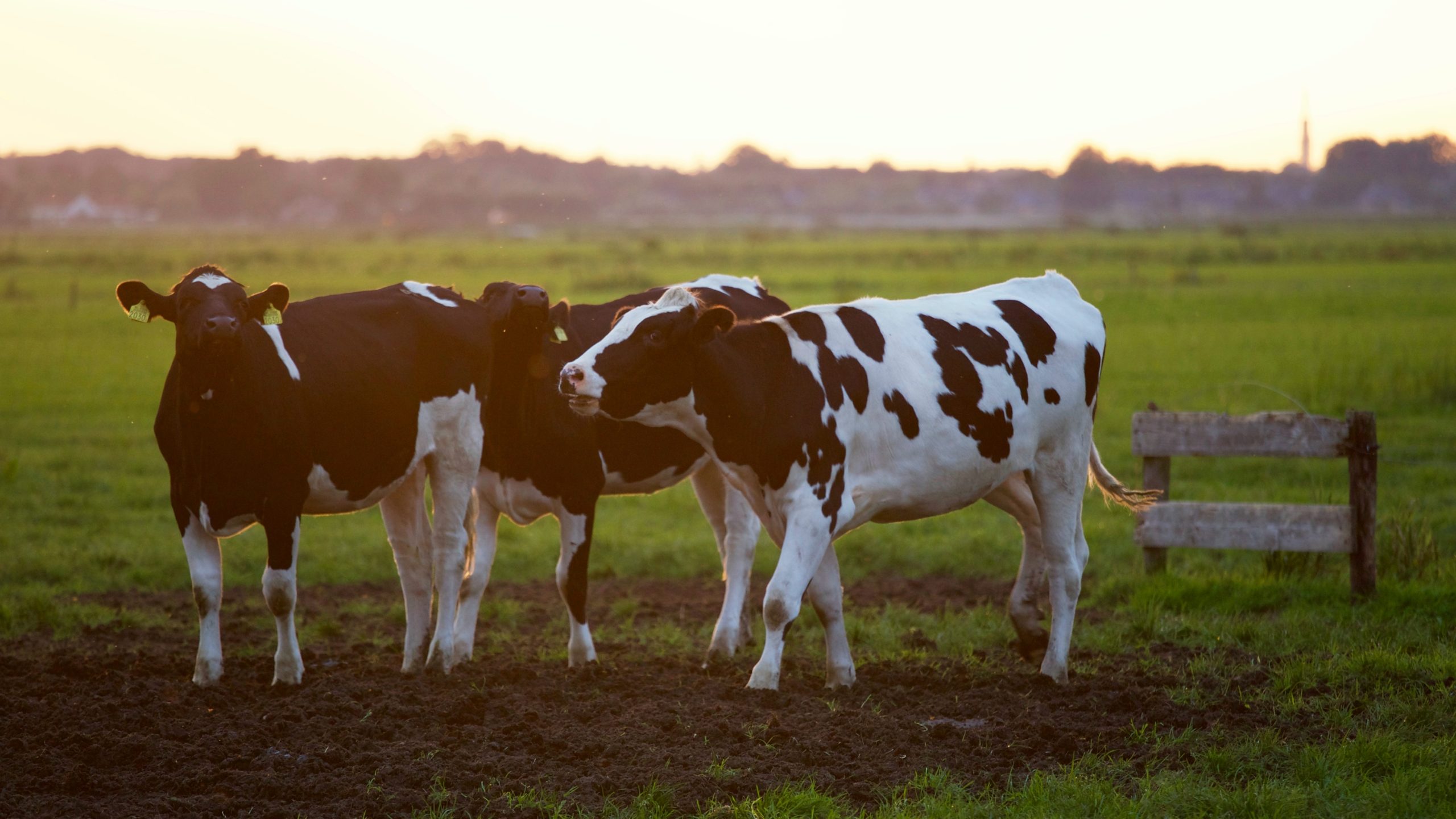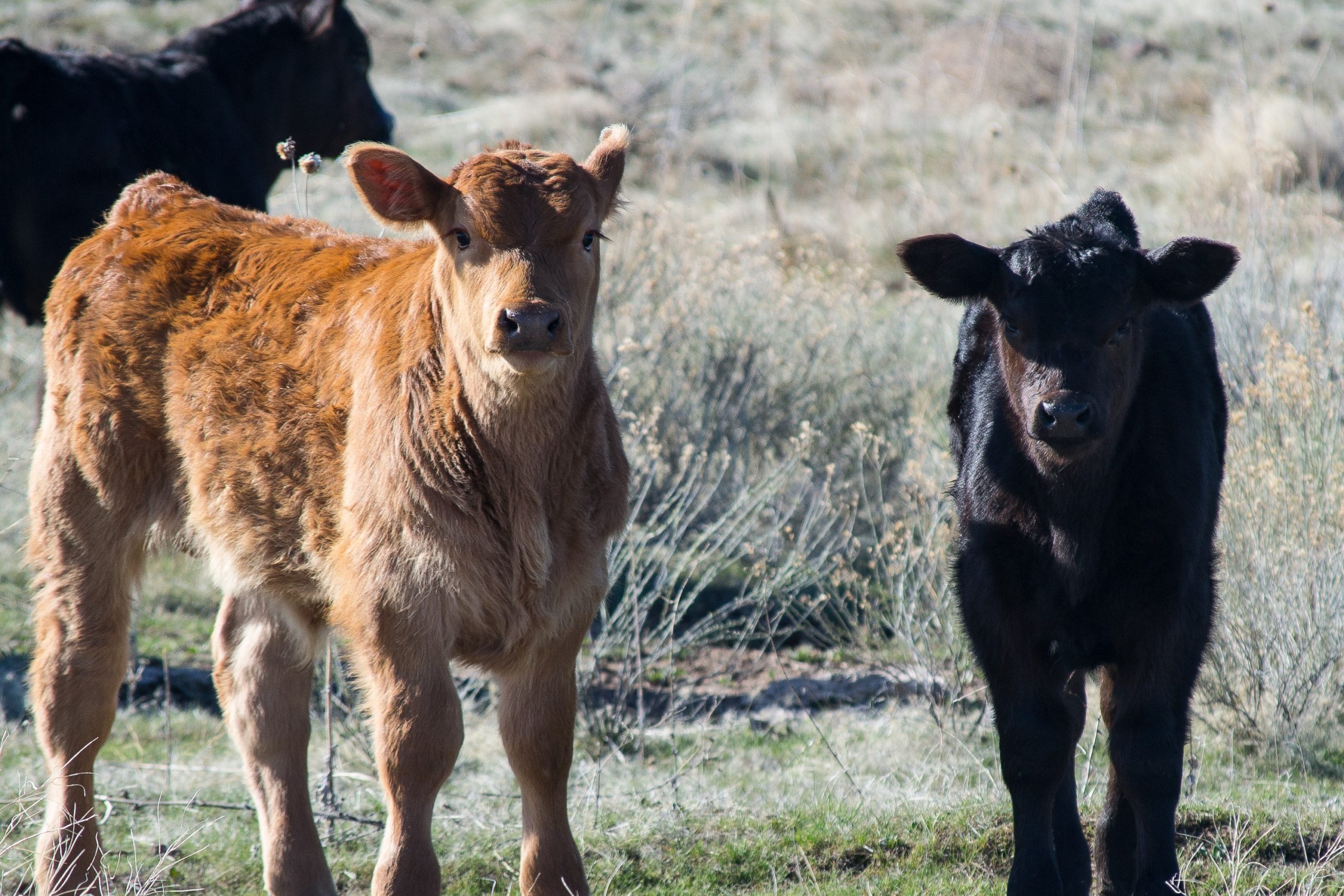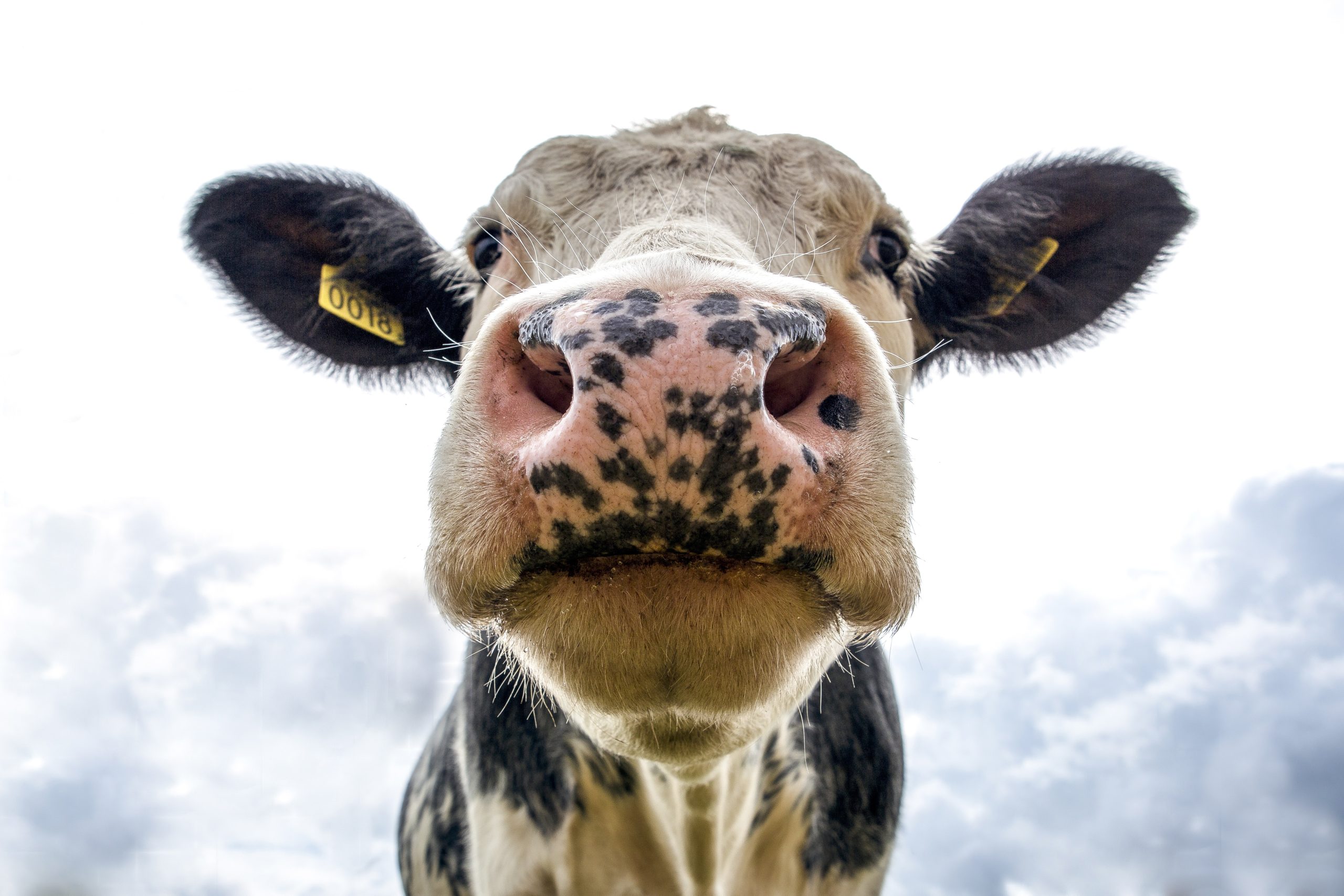A very distinct problem for dairy cows is the disease of ketosis (or acetonaemia). The occurrence of this disease in dairy cows is related to an increased demand for glucose by the animal. Ketosis also occurs in other animals and the problem is known by various names, e.g. pregnancy toxaemia in ewes.
Most commonly, ketosis is seen either in high producing cows or cows on a poor diet. Signs of the disease can be seen before calving, but they occur most commonly in the first month after calving and occasionally in the second month. In a herd, ketosis can either be sporadic with only individuals affected, or endemic with many cows affected over a period.
Cause
The disease is an extension of a normal metabolic process that occurs in most heavily producing dairy cows. The basic problem in ketosis is a deficiency of glucose (or sugar) in the blood and body tissues. Glucose is produced by the cow from carbohydrates which are a major constituent of pastures and other supplementary feeds in varying degrees.
In late pregnancy, glucose is directed from normal bodily functions to the nutrition of the developing calf. As lactation starts, glucose is essential for the formation of lactose (milk sugar) and milk fat. The requirement for glucose is at such high levels that the blood becomes low in glucose (hypoglycaemia). Fifty grams of glucose is required for each litre of milk with a 4.8% lactose test and 30 grams for each litre of milk with a 4% fat test.
Cows (and other ruminants) cannot be fed glucose in their diet; it has to be made in the rumen from suitable carbohydrates in the diet. If the amount of suitable carbohydrate in the diet is not enough to meet the glucose needs of the cow in full milk, the liver starts to manufacture glucose from other basic compounds in the body – usually fat reserves. Unfortunately the increased production by the liver also gives rise to undesirable by-products called ketones. These, together with the lack of blood sugar, cause the signs seen with the disease.
Primary ketosis, as described, occurs when high producing cows simply cannot eat enough carbohydrate to satisfy their glucose needs, or where the feed available is somewhat deficient in carbohydrate.
A secondary ketosis can also occur when a primary problem or disease causes an upset in the digestion or metabolism of carbohydrate by the cow. This can occur even though the amount of carbohydrate eaten seems adequate for normal body functions. The primary diseases involved in this type of ketosis include displacement of the fourth stomach, peritonitis, mastitis, metritis, milk fever, or any problem reducing the cow’s appetite for a length of time.
Signs
The two major forms of ketosis occurring in dairy cattle are the wasting and nervous forms. The wasting form is much more common.
Wasting form of ketosis
Initially there may be a gradual decline in appetite over two to five days. Often the appetite is lost in an unusual manner and the cow may eat grass and hay but will not eat grain or silage. The appetite may appear depraved, with cows eating any objects, including dirt and stones. Consequently, milk yield falls quickly to a fraction of its initial level, but never ceases completely. By this stage the affected animal is obviously ill and is disinclined to move, may be staggery or unsteady on its legs, and the head is often carried low to the ground.
Temperature, pulse, and respiration rates of the cow remain fairly normal as the animal loses weight. The coat is described as having a ‘woody’ appearance, presumably due to the loss of fat reserves under the skin. The ketones produced by the cow in this disease have a characteristic sweet ‘sickly’ smell, which may be detected on the cow’s breath and less commonly in milk samples. Very few affected animals die but, without treatment, recovery is slow with milk yields gradually improving over one month but never fully returning to normal levels. This form can be very mild, the only clue to its presence being a small reduction in milk production.
Nervous form of ketosis
This form of ketosis is less common. In typical cases the signs are quite striking. Affected cows can show a range of signs including apparent blindness, aimless wandering, and strange movements of the tongue leading to incessant licking of the skin. Affected cows may also walk in circles and bellow loudly for no apparent reason. These kinds of behaviour can last for one or two hours, with the signs starting more suddenly than the wasting form of the disease.
Diagnosis of the disease
The typical signs, with a history of the affected animal having recently calved or nearing peak lactation, are usually sufficient to make a diagnosis of primary ketosis.
Secondary ketosis must be suspected where there is a lack of response to treatment, or where the signs seen are not typical of primary ketosis. In this case the underlying cause, for example mastitis, must be diagnosed and treated accordingly. Biochemical tests can be performed on urine, milk, or blood to detect the presence of ketones. Testing is available from veterinarians.
Treatment
The initial aim of treatment is to restore the lack of glucose in the body. A quick-acting glucose supplement is required immediately. Follow-up treatment is aimed at providing a long term supply of glucose.
a. Glucose replacement
- Intravenous administration of a dextrose solution by a veterinarian is effective in the short term, but follow-up treatment is essential if relapses are to be avoided.
- Drenching with propylene glycol or glycerine has longer term effects. It also has the benefit of ease of administration. Treatment should be continued for two to four days. Several commercial compounds contain propylene glycol and glycerine.
b. Hormonal therapy
Many of the long-acting corticosteroids have beneficial effects in ketosis. They are administered by the veterinarian as a single injection. Corticosteroids have the ability to break down protein in muscles to produce glucose, which immediately replenishes the depressed blood glucose levels. When using corticosteroids, it is important to supply an adequate amount of glucose either as a high carbohydrate diet and/or propylene glycol drenches to prevent excessive breakdown of muscle protein.
Control
It is important to prevent ketosis from occurring, rather than treating cases as they appear.
Prevention depends on adequate feeding and management practices.
In times of feed deficiency because of drought or other reasons, the provision of supplementary feed with adequate amounts of carbohydrate is essential. The best feeds tend to be good quality hay, silage, or cereal grain.
The body condition of the dairy cow is important at calving. Cows should be on a rising plane of nutrition up to calving with the aim to calve in good condition (at least score 5 on the Ellinbank Condition Scoring System).
After calving, the cow has the potential to reach maximum efficiency in milk production, but feed requirements for high production are often greater than the voluntary intake of pasture can provide.
Therefore an energy supplement is required and there is evidence that this will improve production and reproductive performance, and decrease the risk of ketosis. The best supplements are good quality hay, silage, or cereal grains. Supplements should be fed at least until the peak of lactation is reached or longer depending on the quality and quantity of available pasture.
Occasionally, very high-producing cows will be susceptible to ketosis every year. In these cases a preventive drenching program of propylene glycol immediately after calving may avert ketosis in individual problem cows.





